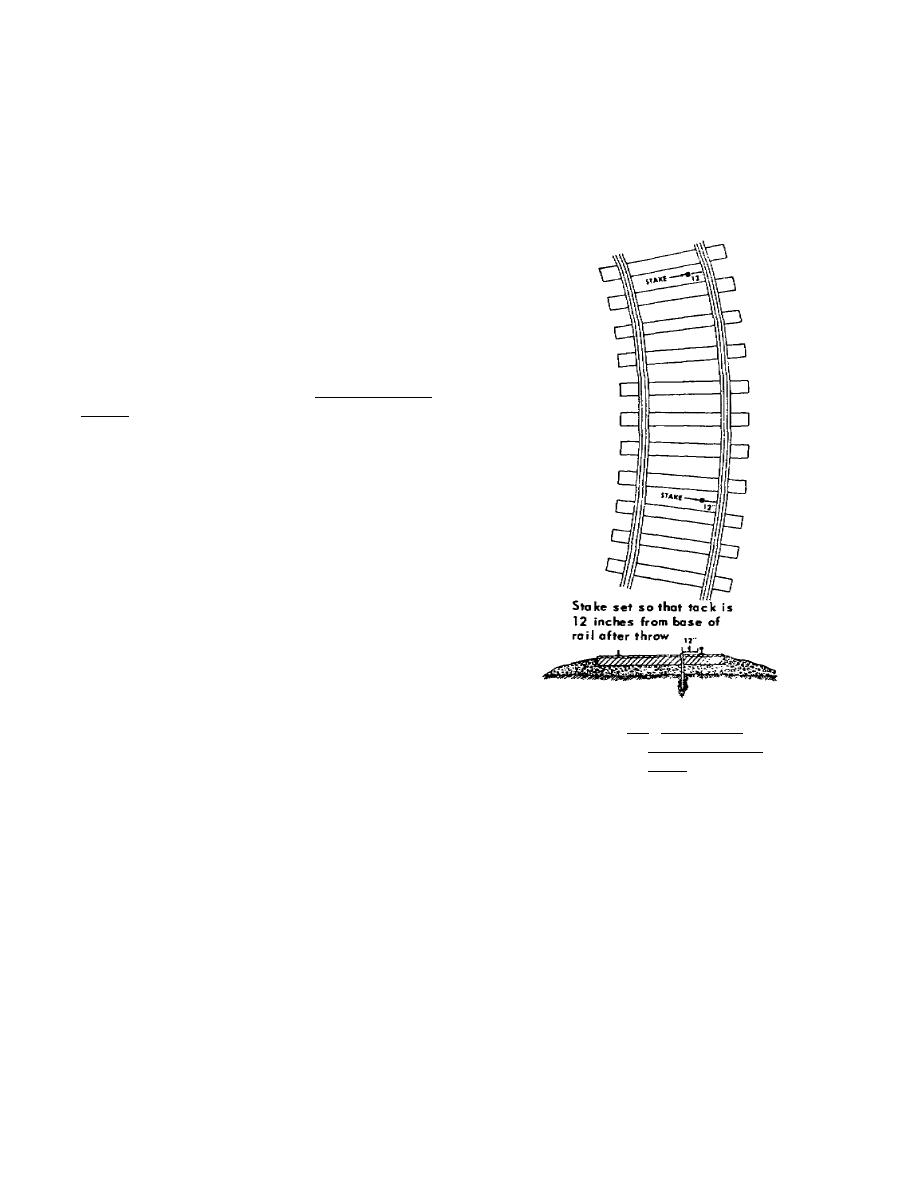
board is placed on one rail of the track with the rail fitted into one of the numbered notches on one end of the
scratch board. The point on the other end of the board is then used to scratch a mark on the nearest tie of the
other track. Then a surveyor's tack is driven into the tie, either inside or outside the mark, depending on whether
the throw is plus or minus, and the full throw away from it. The board is then moved to the next station. When
the maintenance gang comes along, they place the board on the same rail at the same spot in the same numbered
notch, and move the track either in, for a minus throw, or out, for a plus throw, until the point of the board is
above the tack. That station is then considered lined properly.
(2) Single track. Line stakes are used
to mark single track for throwing and may also be
used for double track. The stakes should be of
straight-grain wood and long enough to be driven
down through the ballast and well into the subgrade.
They should be driven down until the top of the
stake is level with the base of the rail. They are
usually set between the two rails, on a line a
constant distance from the track after it has been
thrown. Some railroads place them on the future
centerline of the track. Others use an imaginary line
12 inches from the base of the outside or high rail,
the method illustrated in figure 3.8. One stake is
driven at each station and a surveyor's tack driven
into its head to show the exact point of reference.
Suppose you were setting your stakes 12
inches from the rail; you would calculate the exact
location of the tacks in this way. At a station with a
minus throw, you would add the full throw to 12
inches, place the stake approximately that distance
from the high rail, and drive the tack exactly that
distance from it. If the station required a plus throw,
you would subtract it from 12 inches and use that
figure. For example, if the full throw at a station is
-28, or 3 1/2 inches, the tack would be 12 + 3 1/2 or
Figure 3.8. Setting Line
15 1/2 inches from the base of the rail. Or if the
Stakes on Single
throw were +22, or 2 3/4 inches, the tack would be
Track.
12 2 3/4, or 9 1/4 inches from the rail. If different
weight rails are used on the curve, be sure to add or subtract the differences in the widths of the rail bases.
89



 Previous Page
Previous Page
